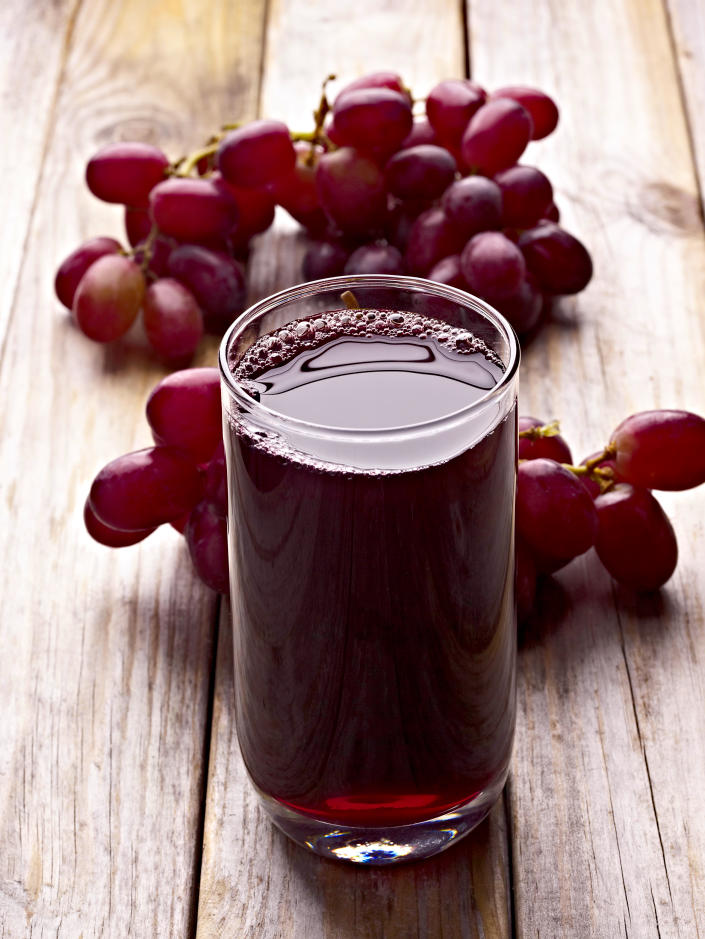Grapes are a sweet treat that dates back to around 6000 BC. That’s right – grapes have delighted people in everyday snacks, charcuterie boards, jams, jellies and wine making since the Neolithic era. It also contains antioxidants. In fact, eating grapes is good for your heart and skin, and may even protect against cancer. Let’s take a look at some magical reasons to eat grapes and some creative ways to use them.
Nutritional composition of grapes
3/4 cup grapes contains:
●90 calories
0 grams of fat
23 grams of carbohydrates
0 grams of protein
● 1 gram of dietary fiber (4% of your daily value (DV))
● 22 mcg of vitamin K (25% DV)
It should be noted that the nutritional content of red, green and black grapes is the same.

Health Benefits of Eating Grapes
This juicy, luscious fruit is best known for containing polyphenols, or beneficial plant compounds. Red, black, and green grapes contain polyphenols in their skins, pulp, and seeds. Many studies have observed the benefits of polyphenols for healthy aging, and studies have shown that eating grapes reduces the risk of cardiovascular disease.
For example, a meta-analysis published in PLOS ONE looked at the effects of grape consumption on blood pressure in 10 studies. Researchers found that the intake of polyphenols from eating grapes daily lowered systolic blood pressure by more than one point. It may improve and lower blood triglyceride levels, LDL cholesterol levels, and key markers of inflammation in the body.
The antioxidant properties of grapes also counteract age-related cognitive decline. A study in people with memory problems found that eating just over two cups of grapes a day helped maintain activity in areas of the brain associated with Alzheimer’s disease. In addition, research conducted on animals suggested that eating grapes may reduce oxidative stress in the brain associated with anxiety and poor memory.
Studies done in both animals and humans have also shown that grapes are associated with colon and gastrointestinal health. For example, studies in mice have shown that resveratrol, a specific polyphenol found in grapes, can suppress replication and promote death of colon cancer cells. A small study of five people found that consuming 2.5 cups of grapes over two weeks reduced the expression of genes that promote cancer growth by 47%. Clearly, these results are limited, but promising!
Finally, new research suggests that grapes may protect the skin from harmful UVB light. Researchers believe grapes act as anti-inflammatory agents and increase the activity of proteins that play a role in processing cells that contribute to skin cancer.
Are there any downsides to eating grapes?
There are no downsides to healthy people eating grapes regularly. People taking blood thinners may need to avoid grapes, which are rich in vitamin K.
fun facts about grapes
You may know that this sweet fruit is a precursor to jelly and wine, but did you know another interesting fact?
Grapes are actually berries
When you think of berries, grapes probably don’t come to mind. However, grapes can be put in the same category as blueberries, strawberries, raspberries, and blackberries. Also, like other berries, red and black grapes get their pigment from compounds called anthocyanins. Anthocyanins have been linked to heart health, cancer and diabetes prevention.
skin retains antioxidants
Grapes contain phytonutrients, most of which are found in the skin of the fruit. The best-known phytonutrient, resveratrol (think red wine), is most concentrated in the skin.
Grape color is determined by genes
In 2006, a plant geneticist determined that the color of grapes depends on their genetic makeup. Red, black, and green grapes have the same nutritional content, but have slightly different antioxidants. Black grapes contain anthocyanins, while green grapes contain flavanols. These differences are minimal as all grapes have been shown to be beneficial.
All grapes contain antioxidants that fight a variety of inflammations. But red and black grapes also contain anthocyanins and reservatrol, plant compounds linked to heart and cognitive health.Darker grapes are therefore Slight It’s the best in the nutritional department, but you can’t go wrong with any grape, so pick the one you like best.

what about grape juice?
Grape juice is rumored to be high in sugar, but 100% Grape Juice is made exclusively from Concord grapes, has no added sugar, and has been extensively researched for its potential health benefits. In fact, 100% grape juice contains the beneficial polyphenols found in grapes, and studies have shown a clear link between drinking grape juice and reducing the risk of cardiovascular disease. I know there is. Additionally, 1/2 cup of 100% grape juice counts as one serving of fruit. Make sure the label says “100%” and that the juice is made exclusively from grapes and has no additives.
healthy grape recipe
Although grapes are naturally sweet, they work well in both savory and dessert dishes. Below are some interesting ways to use grapes in your kitchen.

Savory: Add grapes to your main dish with this Roasted Chicken with Grapes and Burrata recipe or Antoni’s Sheetpan Chicken with Rosemary and Grapes recipe. Grapes pair well with herbs, as in Giada’s grape-and-rosemary focaccia recipe, or with vegetables and cheeses, as in a roasted grape-and-mascarpone toast recipe or feta, Brussels sprouts, grape-and-almond farro salad. it matchs. For a tart and sweet treat, try this pickled grape recipe.

sweet: Place the washed grapes in the freezer and enjoy frozen anytime. Combine grapes and chocolate in this simple chocolate grape bark or add it to a simple and satisfying white kiwi sangria recipe.
This article originally appeared on TODAY.com.
